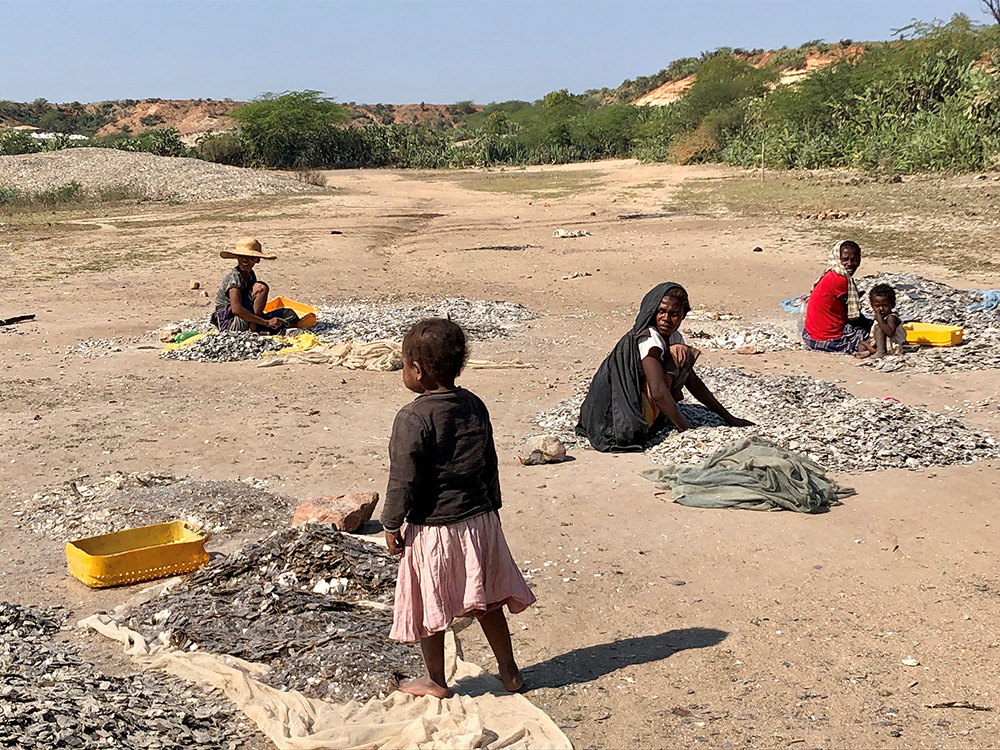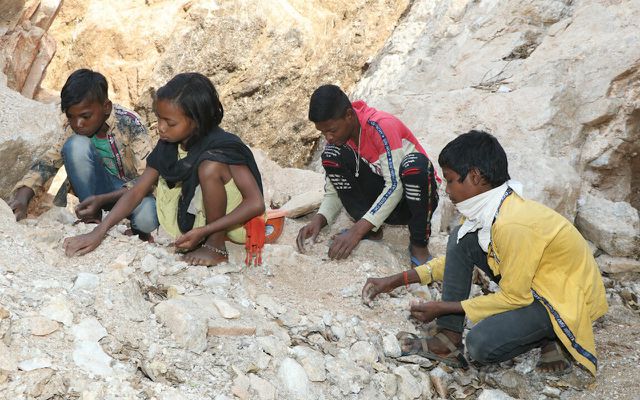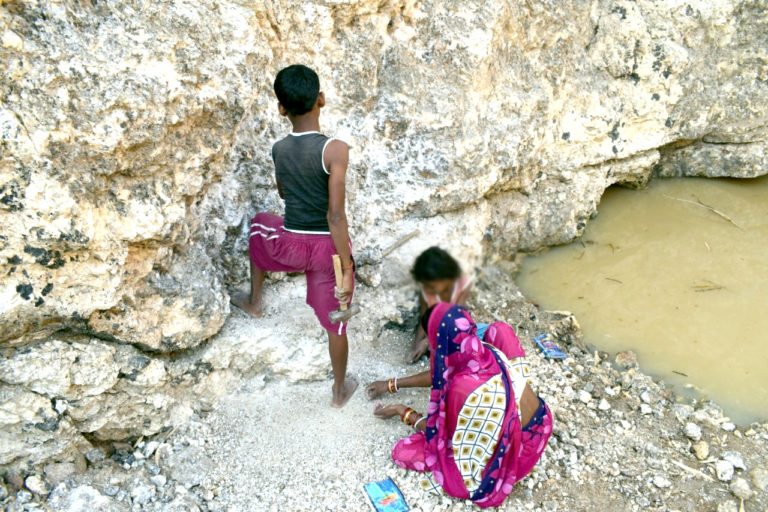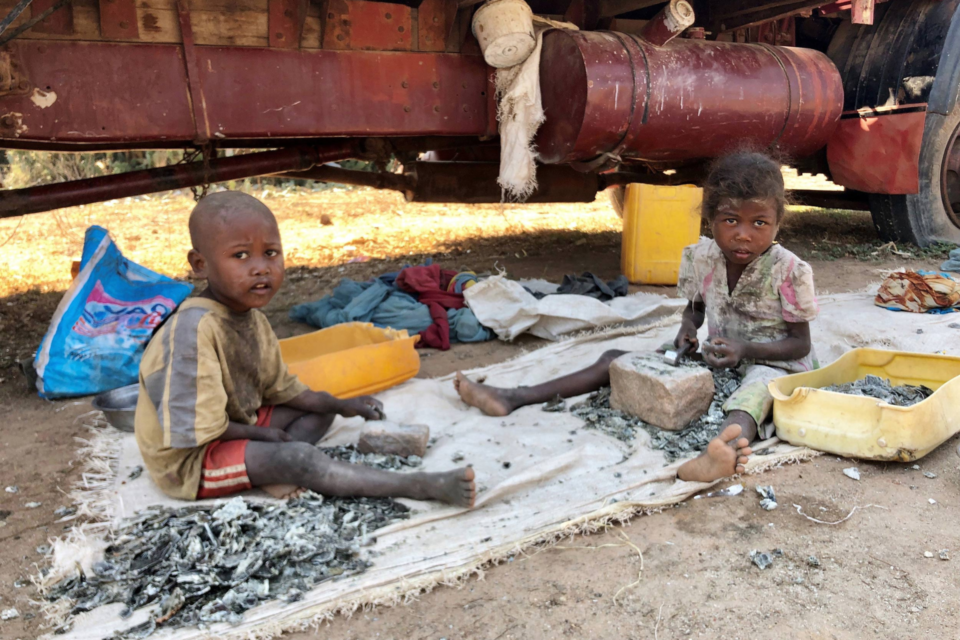By Ritwik Mukherjee
Day break in an impoverished village in Tisri block in Giridih, Jharkhand.
21-year-old Savita (name changed) hurries through her early morning chores, brimming with enthusiasm and anticipation. She has started taking remedial classes in the afternoon for children in her village and is enjoying her new role as a teacher. It gives her immense joy and fulfillment to interact with and teach children, most of who do not know about or have never seen a world beyond the ‘shiny’ mica pellets.

A DREAM COME TRUE
The barren dunes of dhibra (mica) on the periphery of the closed mica mines – Savita has been there, done that. Growing up, she used to dream of becoming a teacher. Despite insurmountable hardships and pressure from family, she studied till Class X and cleared her board exams. Married off soon after, the young girl had no option but to give up on her dream. Her days were spent in collecting and sorting dhibra with her in-laws and her evenings in rigorous household chores, and attending to her alcoholic husband.
Savita was busy sorting through shiny pellets in the scorching sun one morning a few months ago, when volunteers of a partner organization of CRY approached her and requested her to take remedial classes for children in the village. She was educated and qualified enough for the role, they told her. Having doomed herself to a mundane life of hopelessness, she refused immediately and even avoided meeting them the next day. She was scared that her in-laws would throw her out if she refused to join them in dhibra collection. But the volunteers convinced her that the ‘job’ would help her earn, on her own, more than what her family earns by selling mica scrap. The 21-year-old made a difficult choice, and was surprised when her family consented. Today Savita spends two hours every afternoon with 30 children, teaching them maths and language, talking to them about the importance of going to school and encouraging them to dream. She wants to lead them towards a world beyond the dhibra, where they can leaf through books and play with toys, instead of going into muddy mounds looking for shiny scrap.
THE HARD REALITY
CRY and its partner organization recently conducted a baseline study, the results of which mirror the ground reality in this region. Lives and livelihoods in these impoverished villages revolve around the sharp, rocky, barren dunes of the mica fields. Trudging for miles through muddy tracks, collecting mica scrap from 7.7-30am to 5pm come rain or shine, and selling them to dealers for a meager Rs 200 (per family) – hours pass into days and days into months. A lifetime goes by. So it has been for generations. Children are enrolled in schools, but they do not attend classes. Their hands are cut and bruised, they often develop breathing problems and can hardly remember the last time they ate a nutritious meal, but when a new morning comes, they are back at the mines with their families, doing what they know best. They wriggle themselves into freshly-dug ‘rat holes’ for pellets and their parents wait outside with bated breath. How much scrap would they be able to collect before dusk sets in? Or, would they be able to come out alive? The mud mounds can cave in trapping anyone inside. It has happened in the past!
At the end of the day, it is a question of money in the hand, and the families have little choice but to ‘push’ their children into dhibra collection. Are they aware of the term ‘child labour’? May be! But can they really afford to pay heed? Caught in a vicious circle of poverty, ignorance and basic livelihood, this is an existential crisis that can be addressed only through a targeted and sustained campaign, focusing on education and health of children, awareness of adults and creating alternative means of livelihood. It’s a long journey, but the seeds have been sown.
RAY OF HOPE
Eight-year-old Ramu Tudu (name changed) is very fond of her teacher, Savita didi. He attends her remedial classes every day and is learning fast. The boy has never been formally enrolled in school. The only friends he made were at the mica mines – his parents and older siblings let him sit with other young kids even as they busied themselves in collecting and sorting scrap. It was Savita who spotted him and some other kids there and requested their parents to allow them to join the 2-hour classes every afternoon. Not everyone agreed, but Ramu’s parents did. Six months on, Ramu and some of his friends have made impressive progress. Most importantly, they want to study. Noticing their eagerness to learn, some parents have agreed to enroll them in formal schooling in the coming months. “I am so happy for them. I want them to study and continue doing so. It is important to complete basic education. It will help them to get other jobs and earn money when they grow up. Their families will be benefitted in the end. We talk to parents regularly and encourage them to think this way,” says a happy Savita.

When CRY and its partner organization set out to work in the region about 18 months ago, the objective was to ensure that the people here get an opportunity to lead a normal, healthier and safer life with access to basic schooling, health facilities, and alternative sources of income. But first and foremost, people had to be convinced that there is hope beyond despair and change can be ushered in. Planned and sustained programmes over the past year or so have started to impact lives.
Enrolment in schools has increased, with many parents realizing that education is necessary, even though they insist on their children working the mines for at least a few hours every day. Apart from the remedial classes that have turned out to be immensely beneficial, volunteers and teachers check the school attendance register regularly and identify children who are enrolled but hardly ever attend school. They talk to the parents and request them to spare the children from dhibra collection, at least for the school hours. Members of adolescents groups and children’s collectives in the area visit door-to-door to convince parents of the need to educate their children. Most of the members were actively involved in mica scrap collection not long ago. Their journey of change is now slowly starting to change mindsets
Apart from education, the other focus area is health. Families here are completely in the dark about the health hazards they are exposing themselves and their children to. As revealed in the baseline study, most of the children were found to be suffering from malnutrition. They were taken to Poshan Kendra and kept there for 15 days till their condition improved. Families have been provided with seeds and asked to grow them on tiny patches of land (poshan bagicha) outside their mud huts, so that children can get a few greens on their plate. Families are being encouraged to include their children in the immunization programme. Adolescent girls with low haemoglobin count get IFA tablets and are also counseled on ways to practice hygiene sanitation during periods.

Every year, in and around World Day against Child Labour, grim statistics, stark reality and bitter truths overwhelm us. There is talk of stringent eradication measures and ways to implement them effectively. Often, intertwined within those well-calculated statistics, detailed analysis and numerals, there are simple tales that reveal the reason as to why child labour still exists in communities all over the world, including India. Child labour cannot be tackled in isolation. The cause is deeply ingrained in the socio-economic fabric of the communities and the lives they lead. It is time to lend an ear to the stories of Savita and Ramu, and hundreds like them in the hinterland.

There is light at the end of the tunnel, and hopefully, we are just about to turn the corner.




